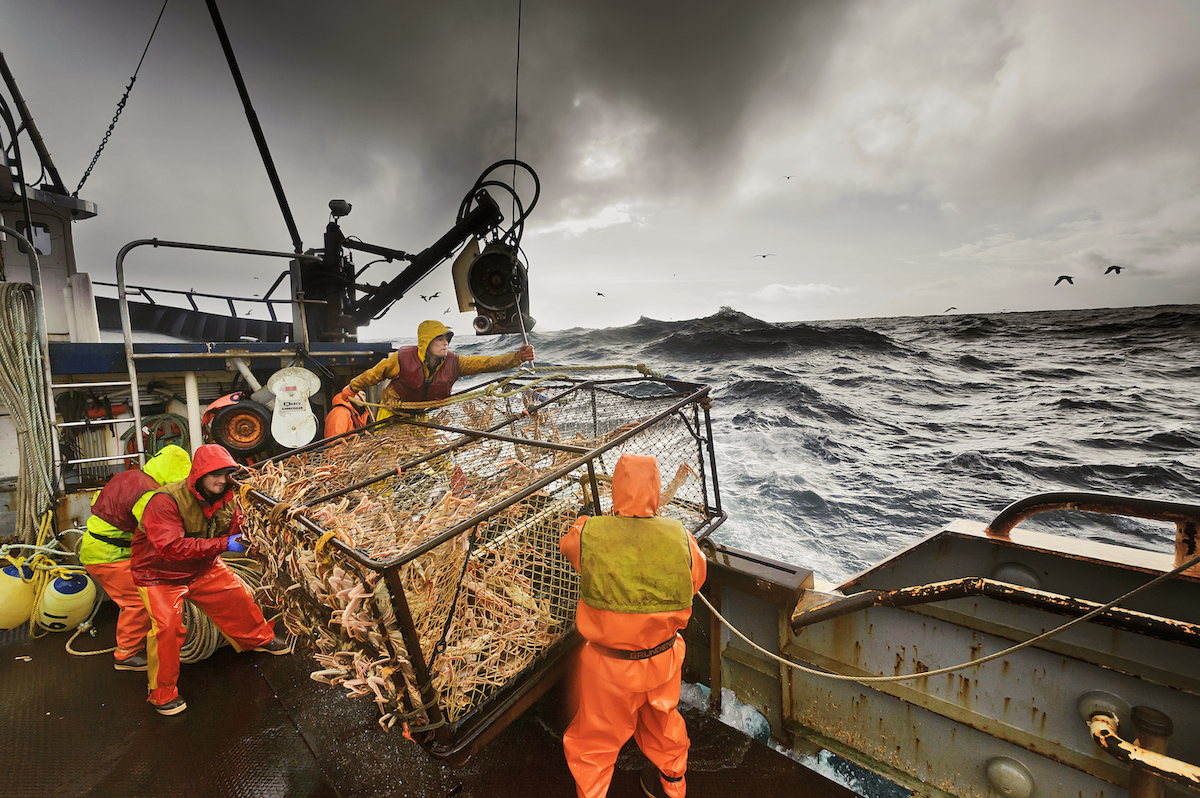Alaska’s Bering Sea king crab crash has reached proportions it hasn’t known since 1994 and 1995, when the population surveys warranted a shutdown of the fishery. The outlook appears equally dismal for Bering Sea opilio crab.
In last year’s 2021-2022 red king crab season the fleet stood down after trawl surveys indicated that the biomass had fallen below the threshold of 8.4 million mature females. Though complete data for this year’s surveys won’t be out until sometime in September or October, preliminary data from the first of three surveys indicates another season in which crabbers will stay tied to the docks.
“We’re seeing some preliminary information that shows that we’re going to continue to be low in abundance,” says Mark Stichert, a groundfish and shellfish fisheries management coordinator with the Alaska Department of Fish and Game, in Kodiak. “We’re seeing some very similar trends. The number of mature females is going down, and mature males are slightly up. What we’re not seeing is the entry of small crab into the fishery.”
The Total Allowable Catch (TAC) is based upon data gleaned from three phases of trawl surveys conducted in late summer. In the 2008-2009 season the TAC was set at around 20 million pounds. In the last decade the TAC’s have risen from 7.8 million pounds in the 2011-2012 season to 9.97 million pounds in the 2015-2016 season, then declined.
The TAC for the 2017-2018 season had been set at about 3 million pounds and was reduced to the 1.2 million pounds in the 2020-2021 fishery.
Given the complexity of the ocean ecosystem, multiple conditions may be responsible for the rapid decline.
“Clearly, there’s no smoking gun,” says Stichert. “We’ve been in this trend for quite some time, and something is preventing the young crab from entering the fishery.”
Among theories considered by biologists, ocean temperature fluctuations and subsequent seasonal sea ice formation could have an adverse effect on the survival of larval crabs during the first month or two after they hatch, when they live as pelagics and are subject to the whims of ocean currents.
“Water temperature affects currents,” Stichert says, “and they may get dropped into a less complex bottom structure.” That can mean falling into a land of starvation or a land of predators—or both.
The total mass of sea ice in the northern hemisphere has declined by 13 percent in the last decade, and the lack of ice affects water temperatures. While cold north winds dominated northern regions of the Bering Sea, a prevailing trend of warm, southerly winds prevented ice formation south of Bristol Bay and the Pribilof Islands.
“Ten years ago, it was not uncommon for ice to hit the north side of the Alaska Peninsula as far south as the Pribilof Islands,” Stichert says.
At the same time oceanographic data notes the shrinking of the “Cold Pool,” a body of water with temperatures of 0 degrees to 2 degrees Celsius. The Cold Pool serves as a barrier separating species such as pollock and cod from the northern reaches of the Bering Sea. Its absence from 2017 to 2019 has had a profound effect on species distribution, according to the 2021 Eastern Bering Sea Ecosystem Status Report, put out by the National Oceanic and Atmospheric Administration.
Some of the same ecosystem changes are suspect in the opilio crab crash. Last year the industry had expected a TAC of around 45 million pounds, which would have been similar to 2020-2021, but trawl surveys revealed a 99 percent drop in mature females and a substantial drop in the abundance of mature males.
The North Pacific Fishery Management Council set the TAC for the 2021-2022 season at 12.4 million pounds, but the State of Alaska which jointly manages the fishery, opted for a much-lower TAC and set it at 5.6 million pounds.
“We saw an 80 to 90-percent decline in all sizes within the population,” says Stichert.
The trawl surveys also found more than 50 percent of Pacific cod biomass had migrated to the northern Bering Sea. Those fish are normally held south of the crab rearing areas by the Cold Pool.
But in its absence, cod moved in and have been blamed for predation on the opilio crab. Another oddity is that the crab had marched westward, into deeper water, suggesting they were looking for colder subsurface sea temperatures.
Though some speculated that the crab traveled outside of the survey areas, scientists who advise the council are convinced that the crabs’ disappearance is linked to a cataclysmic mortality event.
As of July 25 the two survey vessels had yet to complete transects in the last two areas which encompass the waters around the Pribilof Islands and the northern Bering Sea. But it was doubtful that the missing opilio would show up; moreover in abundance that would substantiate a profitable TAC for the crabbers.
“It’s a massive, massive blow to the industry,” says Stichert. “There is lots of uncertainty, and it’s hard to predict where it’s going to end up.”







